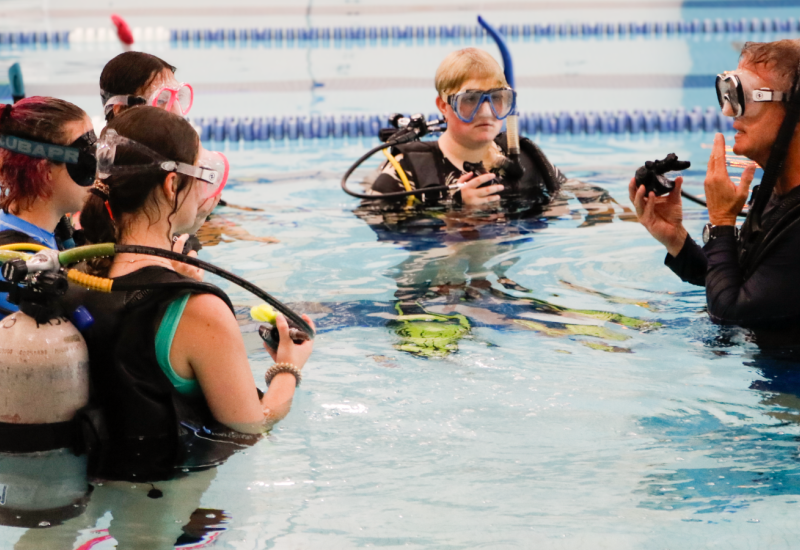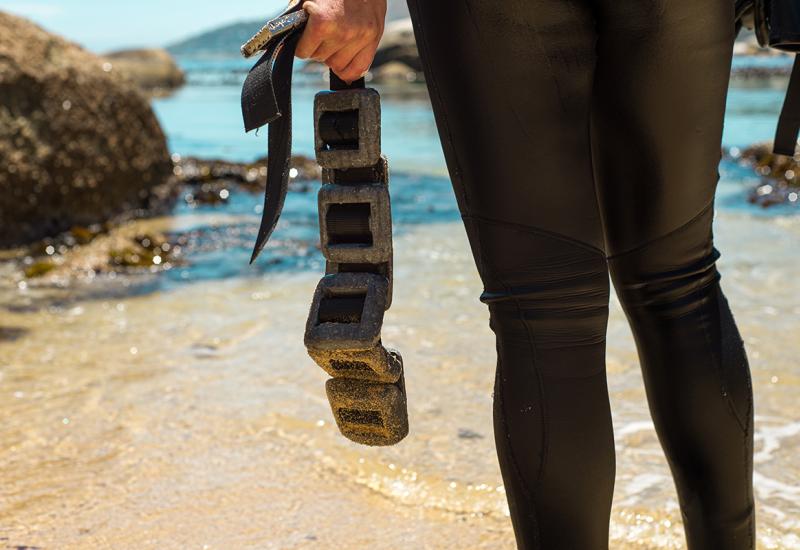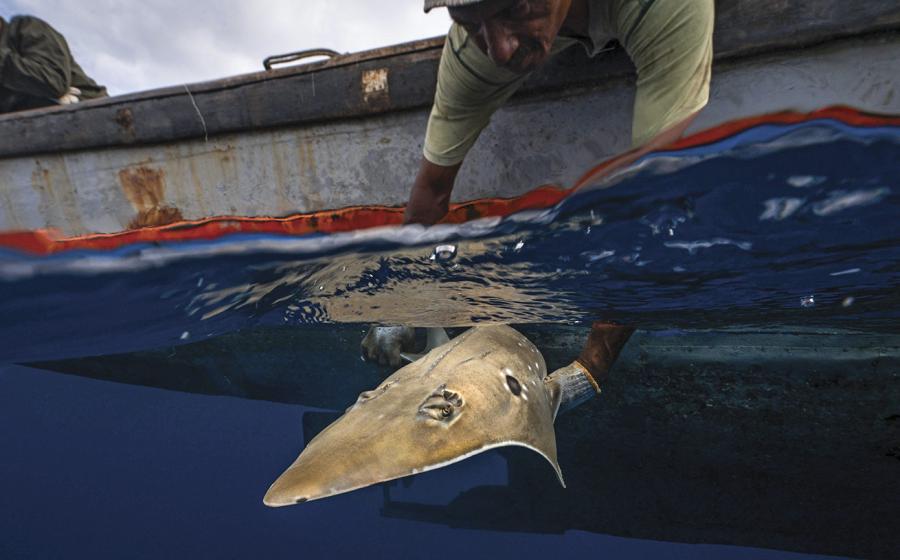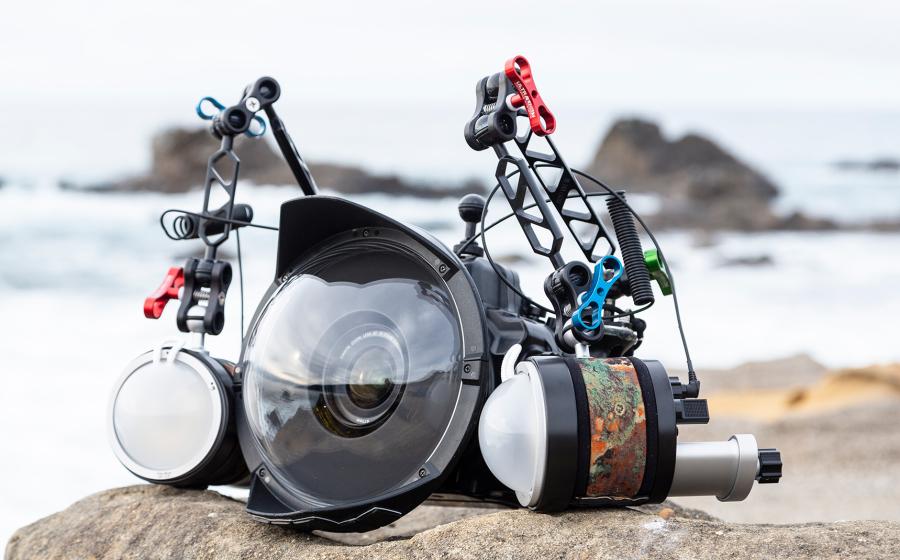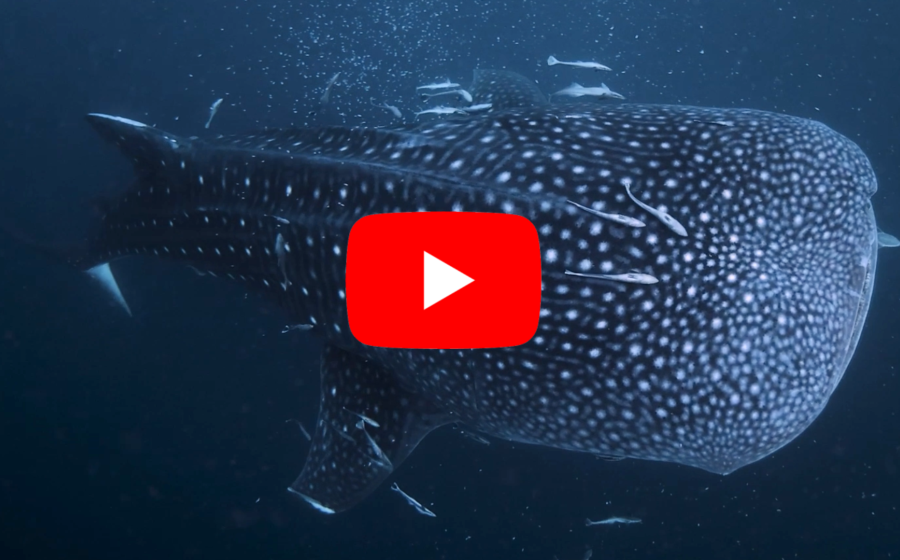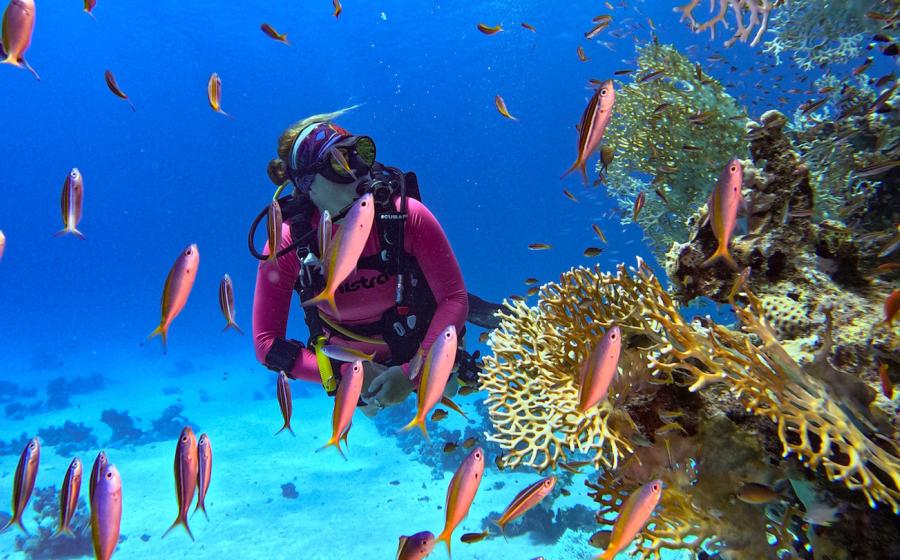Night Diving Made Easy

No. 46
Manta Night Dive, Kona, Hawaii
Best Night Dives
Shutterstock
Night diving is special because even a familiar site looks different at night. When you make a day dive, you normally scan the entire dive site looking at your surroundings. At night, you see only the area of the dive site that is lit by your light. This forces you to slow down and concentrate on that one area.
Tip #1
Stay close and shallow. Night dives tend to be shallow, so you'll have plenty of bottom time to go slow and take it all in. Colors, for example, are much more vivid on a night dive than they are during the day. It's simple dive physics. If you're making a daytime dive in 66 feet of water, sunlight gets absorbed, stealing away the colors. On a night dive, your light source is never more than five or 10 feet away, so the water doesn't take away any of the light spectrum.
Tip #2
Redefine "night." When the sun is low in the sky, very little light penetrates the surface, making it pretty dark underwater even when there is still a fair amount of light above. Diving at dusk is a good way to start your night diving career. You have the convenience of gearing up when it is relatively light, but get the full effect of making a night dive. On ocean dusk dives, you also have the added benefit of watching the reef creatures migrate through a kind of "shift change" as the day animals disappear and the night animals come out to play.
Tip #3
Get the right gear. You'll need a primary dive light and a backup light. The primary light should be the larger and brighter of the two. How large and how bright? That's up to you, and your choice may vary depending on the clarity of the water. When shopping for a light, try out several as some have different grips and handles to suit your personal preferences. Your backup — or pocket — light should be small enough to stow easily, yet bright enough to help you find your way back home. Most lights designed for this purpose are smaller and typically shaped more like a traditional flashlight. Remember, though, that if the primary light fails and you switch to your backup, it's time to end the dive.
Tip #4
Tie one on. Most dive lights come with a way to attach a lanyard or wrist strap. Get one. It's cheap insurance against dropping and losing your primary source of illumination. Most dive lights are negatively buoyant; if you drop one in deep water it may be gone forever.
Tip #5
Know the signals. If there's one aspect of night diving that is more complicated than day diving, it's communication. You and your buddy should review hand signals before entering the water and agree on the ones you'll use. You have two options: One is to shine the light on your hands so your buddy can see what you're saying. The other is to make signals using your light. You can signal “OK” and “Yes” or “No” by moving your light in a circle, or up and down, or side to side. You can even get your buddy's attention by circling or “lassoing” his light beam and then pulling it toward you. If you've practiced this beforehand, your buddy will know what you're doing.
Should you become separated from your buddy, get vertical and shine your light outward while turning a full circle. Your buddy should do the same and chances are you'll spot each other. If you surface far from the dive boat, point your light at the boat until you get the crew's attention, then shine it down on your head so the crew can see you clearly.
Tip #6
Aim carefully. On any night dive, you should treat your light like a loaded gun. Never shine your light directly into another diver's eyes--you can ruin his night vision.
Tip #7
Go easy on the light. First-time night divers tend to buy the biggest, brightest beam they can find and cling to it like a security blanket. As you gain experience diving at night and get comfortable, you'll find smaller primary dive lights do just as well, particularly in clear water. On some night dives, lights of other divers, the boat and the moon can provide so much ambient light that you may leave your torch off for much of the dive.
If you do need a light, you may not need its full power. Some LEDs have a half-power setting you can use to dial back the brightness. Or try dimming your light by cupping your fingers over it. In any case, you'll see more natural behaviors if you use the edge of the pool of light, not the hot spot, to pick out fish and critters.
One of the unique things about night diving in the ocean is bioluminescence. Some varieties of single-celled plankton give off light when they are disturbed underwater. Your fin kicks or a wave of your hand can create an explosion of undersea sparks, but you'll miss the show in anything but dark conditions.
Tip #8
Do reconnaissance. Before you make your first night dive on a site, you should dive it during the day. This allows you to learn the layout of the site and get comfortable with it.
Tip #9
Mark the way home. If you're diving from shore, rather than from a boat, you should also place lights on the beach. It's a good idea to have two lights close together at your entry/exit point and then a third farther away. This gives you something to swim for after the dive when you're swimming back in.
Making a night dive from a boat brings with it a different set of concerns. The boat should be marked with a flashing strobe you can use to find your way back. When surfacing near the boat, shine your light toward the surface and watch carefully to avoid colliding with the hull.
Tip #10
Have fun! Most important, relax and enjoy the dive. It's natural to be a little anxious before stepping in the dark void of an unlit ocean or lake, but it's also exciting. When you overcome your anxieties about night diving, you get another eight hours of each precious dive day to explore and create new and lasting dive memories.
For more tips on diving at night, read Eric Douglas’s No-Hassle Night Diving.
Manta photo from Shutterstock.

ShutterstockNo. 46
Manta Night Dive, Kona, Hawaii
Best Night Dives
Night diving is special because even a familiar site looks different at night. When you make a day dive, you normally scan the entire dive site looking at your surroundings. At night, you see only the area of the dive site that is lit by your light. This forces you to slow down and concentrate on that one area.
Tip #1
Stay close and shallow. Night dives tend to be shallow, so you'll have plenty of bottom time to go slow and take it all in. Colors, for example, are much more vivid on a night dive than they are during the day. It's simple dive physics. If you're making a daytime dive in 66 feet of water, sunlight gets absorbed, stealing away the colors. On a night dive, your light source is never more than five or 10 feet away, so the water doesn't take away any of the light spectrum.
Tip #2
Redefine "night." When the sun is low in the sky, very little light penetrates the surface, making it pretty dark underwater even when there is still a fair amount of light above. Diving at dusk is a good way to start your night diving career. You have the convenience of gearing up when it is relatively light, but get the full effect of making a night dive. On ocean dusk dives, you also have the added benefit of watching the reef creatures migrate through a kind of "shift change" as the day animals disappear and the night animals come out to play.
Tip #3
Get the right gear. You'll need a primary dive light and a backup light. The primary light should be the larger and brighter of the two. How large and how bright? That's up to you, and your choice may vary depending on the clarity of the water. When shopping for a light, try out several as some have different grips and handles to suit your personal preferences. Your backup — or pocket — light should be small enough to stow easily, yet bright enough to help you find your way back home. Most lights designed for this purpose are smaller and typically shaped more like a traditional flashlight. Remember, though, that if the primary light fails and you switch to your backup, it's time to end the dive.
Tip #4
Tie one on. Most dive lights come with a way to attach a lanyard or wrist strap. Get one. It's cheap insurance against dropping and losing your primary source of illumination. Most dive lights are negatively buoyant; if you drop one in deep water it may be gone forever.
Tip #5
Know the signals. If there's one aspect of night diving that is more complicated than day diving, it's communication. You and your buddy should review hand signals before entering the water and agree on the ones you'll use. You have two options: One is to shine the light on your hands so your buddy can see what you're saying. The other is to make signals using your light. You can signal “OK” and “Yes” or “No” by moving your light in a circle, or up and down, or side to side. You can even get your buddy's attention by circling or “lassoing” his light beam and then pulling it toward you. If you've practiced this beforehand, your buddy will know what you're doing.
Should you become separated from your buddy, get vertical and shine your light outward while turning a full circle. Your buddy should do the same and chances are you'll spot each other. If you surface far from the dive boat, point your light at the boat until you get the crew's attention, then shine it down on your head so the crew can see you clearly.
Tip #6
Aim carefully. On any night dive, you should treat your light like a loaded gun. Never shine your light directly into another diver's eyes--you can ruin his night vision.
Tip #7
Go easy on the light. First-time night divers tend to buy the biggest, brightest beam they can find and cling to it like a security blanket. As you gain experience diving at night and get comfortable, you'll find smaller primary dive lights do just as well, particularly in clear water. On some night dives, lights of other divers, the boat and the moon can provide so much ambient light that you may leave your torch off for much of the dive.
If you do need a light, you may not need its full power. Some LEDs have a half-power setting you can use to dial back the brightness. Or try dimming your light by cupping your fingers over it. In any case, you'll see more natural behaviors if you use the edge of the pool of light, not the hot spot, to pick out fish and critters.
One of the unique things about night diving in the ocean is bioluminescence. Some varieties of single-celled plankton give off light when they are disturbed underwater. Your fin kicks or a wave of your hand can create an explosion of undersea sparks, but you'll miss the show in anything but dark conditions.
Tip #8
Do reconnaissance. Before you make your first night dive on a site, you should dive it during the day. This allows you to learn the layout of the site and get comfortable with it.
Tip #9
Mark the way home. If you're diving from shore, rather than from a boat, you should also place lights on the beach. It's a good idea to have two lights close together at your entry/exit point and then a third farther away. This gives you something to swim for after the dive when you're swimming back in.
Making a night dive from a boat brings with it a different set of concerns. The boat should be marked with a flashing strobe you can use to find your way back. When surfacing near the boat, shine your light toward the surface and watch carefully to avoid colliding with the hull.
Tip #10
Have fun! Most important, relax and enjoy the dive. It's natural to be a little anxious before stepping in the dark void of an unlit ocean or lake, but it's also exciting. When you overcome your anxieties about night diving, you get another eight hours of each precious dive day to explore and create new and lasting dive memories.
For more tips on diving at night, read Eric Douglas’s No-Hassle Night Diving.
Manta photo from Shutterstock.


